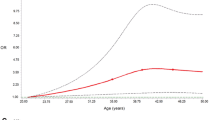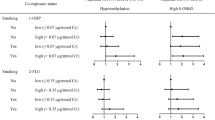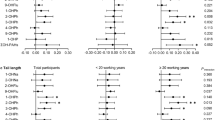Abstract
Objective: This study investigates the effect of multiple factors, including exposure to polycyclic aromatic hydrocarbons (PAHs), lifestyle, genetic polymorphism of cytochrome P450 (CYP)1A1, glutathione transferase (GST)M1, GSTP1, N-acetyltransferase (NAT)2 and gene p53, as well as any family history of cancer, on DNA adduct levels in coke-oven workers. Methods: Sixty-five coke-oven workers employed at the largest iron-steel factory in China were recruited for the study. Personal data were collected at the interview. DNA adduct levels in total white blood cells (WBCs) were detected using 32P-postlabeling techniques. Genetic polymorphisms were analyzed by polymerase chain reaction (PCR) methods. Results: The subjects were divided into low and high exposure groups, according to personal exposure to PAHs. The mean adduct value was 1.57 (range 0.54 to 4.35) per 108 nucleotides. A tendency for increased levels of DNA adducts in the high exposure group was observed, compared with the low exposure group (P = 0.07). In the low exposure group, DNA adducts were found to be positively associated with urinary cotinine (r = 0.44, P = 0.01). The rare allele homozygotes of CYP1A1 showed significantly higher DNA adduct levels than those of other CYP1A1 genotypes. Individuals with the NAT2 wild type had significantly increased DNA adduct levels than those with other NAT2 genotypes in the high exposure group. The p53 genetic polymorphism revealed a significantly positive effect on DNA adducts formation. There was a significantly higher adduct level in the subjects with a family history of cancer than those without, in the high exposure category. Conclusions: Effects of several variables, such as smoking, genetic polymorphism of 2 CYP1A1, NAT2, and gene p53, and a family history of cancer on DNA adduct levels were found, suggesting that these variables should be considered when evaluating the genotoxic effect of occupational exposure to PAHs using WBCs DNA adducts.
Similar content being viewed by others
Author information
Authors and Affiliations
Additional information
Received: 15 February 1999 / Accepted: 15 June 1999
Rights and permissions
About this article
Cite this article
Zhang, J., Ichiba, M., Feng, Y. et al. Aromatic DNA adducts in coke-oven workers, in relation to exposure, lifestyle and genetic polymorphism of metabolic enzymes. Int Arch Occup Environ Health 73, 127–135 (2000). https://doi.org/10.1007/s004200050018
Issue Date:
DOI: https://doi.org/10.1007/s004200050018




